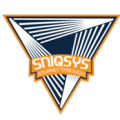Java
Java, for us, stands out as the preferred language for developing business applications Adaptability and Versatility: Java’s adaptability to a wide range of platforms and systems is a key factor in our preference. It follows the “Write Once, Run Anywhere” principle, which allows us to develop applications that work seamlessly on diverse operating system.
Robust Security Features: Java’s robust security features, including bytecode verification, encryption, and user authentication methods, provide a strong shield against potential threats. This is particularly important for safeguarding sensitive business data and ensuring the privacy and trust of our clients’ customers.
Cost Savings: By utilizing open-source Java implementations like OpenJDK, we eliminate the need for costly licensing fees Java’s rich ecosystem offers a vast library of open-source libraries, frameworks, and tools. These resources enable us to expedite development, reduce time-to-market, and deliver feature-rich applications. These savings directly benefit our clients.
Freedom from Vendor Lock-In: Java’s Standard Based, Vendor-neutral approach allows us to offer our clients a degree of freedom from vendor lock-in. They can choose the implementation, support, and service providers that align with their preferences and organizational needs. This flexibility enables them to tailor their solutions to their unique requirements.
Python
Python’s importance lies in its adaptability, user-friendly nature, and its widespread adoption for Artificial Intelligence, Machine Learning and Automation.
Ease of Learning and Readability: Python is known for its clear and readable syntax. Versatility Python can be used for a wide range of applications, from web development and data analysis to artificial intelligence and scientific computing.
Data Science and Machine Learning: Python has become the primary language for data science and machine learning. Libraries and frameworks like NumPy, Pandas, TensorFlow, and scikit-learn make it an essential tool for data analysis, modeling, and AI development.
Automation: Python is good for scripting and automation tasks. Its ease of integration with operating systems, APIs, and databases allows for the automation of repetitive tasks and workflows.
Community and Ecosystem: As of now, Python has a large and active community of developers, which ensures continuous support, the development of new libraries, and regular updates to the language.
Open Source and Free: Python is open-source and free, which means no licensing costs are associated with using it. So Total Cost of Ownership can be reduced.
Rapid Development: Startups and Entrepreneurship: Python is often used by startups and entrepreneurs due to its speed of development and the availability of resources for building Products.
Type Script, JavaScript
Web Interactivity and User Experience: JavaScript is the backbone of web interactivity. It powers dynamic and responsive user interfaces, making web applications more engaging and interactive. This enhances the user experience by providing real-time updates, smooth transitions, and rich multimedia content.
Cross-Platform Development: JavaScript can be used for cross-platform development. Technologies like React Native and NativeScript enable the creation of mobile apps for multiple platforms (iOS, Android) using a single JavaScript codebase.
Extensive Ecosystem of Libraries and Frameworks: JavaScript has a thriving ecosystem of libraries and frameworks, such as React, Angular, and Vue.js for front-end development, and Node.js for server-side development.
Server-Side Development: With the advent of Node.js, JavaScript expanded its reach to server-side development. This “JavaScript everywhere” approach allows developers to use the same language on both the client and server, streamlining development workflows.
Real-Time Communication: JavaScript facilitates real-time communication through technologies like WebSockets and WebRTC. This is crucial for applications requiring live chats, online gaming, video conferencing, and collaborative tools.
Asynchronous Programming: JavaScript’s support for asynchronous programming is crucial for handling concurrent tasks and ensuring that applications remain responsive, even when performing resource-intensive operations.
Modern Web Technologies: JavaScript plays a central role in enabling modern web technologies, such as Progressive Web Apps (PWAs) and Single Page Applications (SPAs), which provide fast, responsive, and app-like user experiences.
Data Visualization: Libraries like D3.js allow developers to create interactive data visualizations and charts, making it an ideal choice for data-driven applications.

